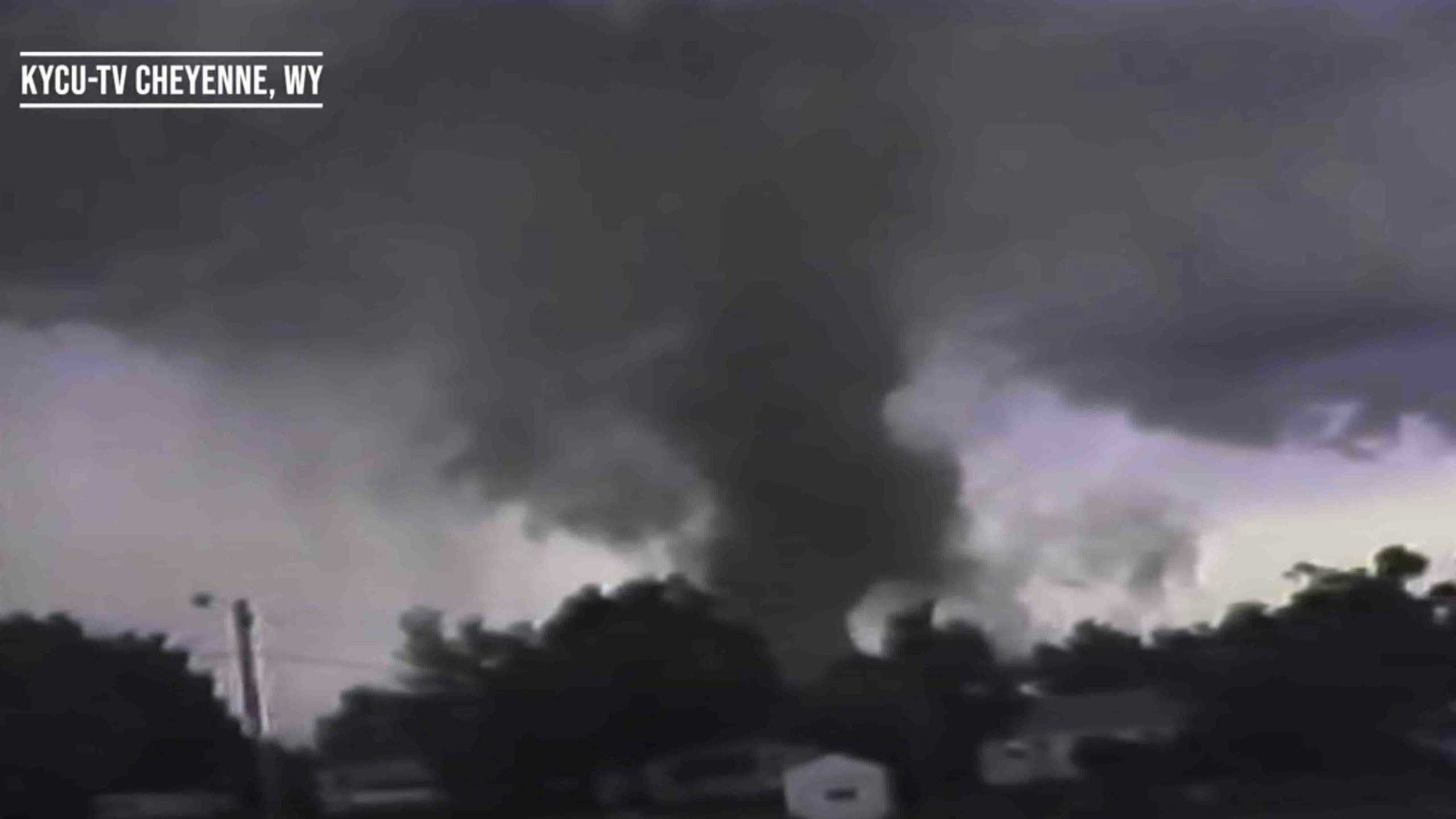**For All Things Wyoming, Sign-Up For Our Daily Newsletter***
Wyoming gets tornadoes. They aren’t usually the size of the twisters that wreak havoc in the areas known as “tornado alley” in the Midwest or the Southern states. But the eastern part of Wyoming, in particular, will have a few every year.
Forty-three years ago, Wyoming was hit by the most destructive tornado in state history. It was officially an F3, using the EF scale which ranks tornados by damage intensity, although some scientists claim it should have be rated an F4.
The estimated winds in an F3 are between 158 and 206 mph, which can destroy houses, overturn trains, uproot trees and throw cars about like toys.
All of that happened in Cheyenne on July 16, 1979 — except for the train part. It wasn’t that this tornado couldn’t have done it, it could have.
It was just that the tornado was in northern Cheyenne, where the trains are not. There are planes though. Big heavy military aircraft which were about to meet their match.
This churning multi-color tornado started off white as a funnel cloud with a greenish backdrop behind it.
Upon touching the ground, it turned brown and spat specs of debris out of its vortex.
The more debris it hit the darker it got until it was black with white flashes created by lightning and downed utility poles and wrecked transformers.


“I saw it hit a transformer. It was an explosion,” recalled former Cheyenne Mayor Don Erickson who was watching it from the roof of the Cheyenne City Hall.
He said he found out later it was the transformer at the governor’s mansion off of Interstate 25.
Before all of the phone lines went down, Erickson called David Guille, the director of what was known then as “Civil Defense,” and he confirmed the tornado.



Guille sounded the city’s air raid sirens but only part of the community had them.
Everyone else had to find out by word-of-mouth or by actually seeing the oncoming storm, as there were no weather apps, smartphones, or way to connect to an Internet. By today’s standards, it was the stone age.
The massive twister, people reported, was actually “hopping” down the Cheyenne Airport runway before vacuuming up the 130,000-pound C-130s and strewing them across the runway. Like toys.
The giant Lockhead Hercules aircraft are a common sight in Cheyenne, where the airport shared the runway with F.E. Warren Air Force Base.
Then the tornado went down the hill and headed toward what is now the Frontier Mall.
“Imagine what would have happened if the mall was there at the time,” Erickson said. “It would have been a major catastrophe.”
Part of a subdivision next to the area where the mall now stands was hit hard.
And then off to the Buffalo Ridge subdivision where it did most of the damage. Hundreds of homes were destroyed.
As the twister headed east and out of Cheyenne, it reverted back to a white funnel cloud before dissipating into the sky.



After getting off the phone with Guille, Erickson called Byron Rookstool, Cheyenne’s chief of police. Rookstool picked Erickson up and the two went out to Buffalo Ridge to survey the damage.
From start to finish it lasted just a few minutes. But in that time, one life was lost, 14 people were hospitalized and millions of dollars of damages occurred.
The psychological damage, however, what is what Erickson, now 85, recalls.
“It caused an anxiety in the community when any type of tornado watch happened,” Erickson said, noting that tornado watches were relatively common in the summer time. Actual tornadoes, however, were another thing.
“I suspect the impact of that day still has an influence on people who experienced it,” he said. “I know it has an impact on me to this day.”
Erickson said he was particularly struck by the force of the tornado when he surveyed the damage by air.
“When you see it from above, that’s where it gives you the magnitude, the scope, the fury, and the strength of the energy in that tornado,” he said looking away.
The Cheyenne TV station, then known as KYCU-TV, aired a 30 minute special newscast days after the tornado. It can be viewed in its entirety here.
**For All Things Wyoming, Sign-Up For Our Daily Newsletter***





